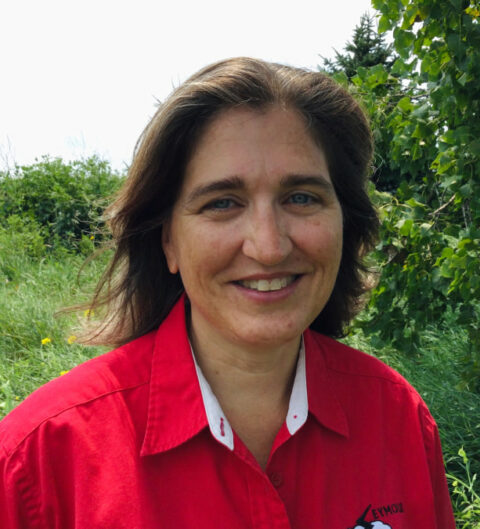“I feel close to my dad when I’m in the shop. I enjoyed watching his work and problem-solving. I remember him often heading out to his shop and saying, ‘I wonder what mistakes I will make today.’ Problem-solving in the shop is a way of life. I am invigorated by the challenge of teaching teenagers how to use and respect equipment while being hands-on, minds-on.’’
Staci Sievert spent the first 22 years of her career as a high school social studies teacher at Seymour Community High School in Seymour, Wisconsin. The high school searched for a technical education teacher for four years when Sievert offered to be re-trained and take the role. The school district and Sievert worked together to create a schedule where she could take early morning and evening classes at a local college and teach during the day. Sievert learned wood manufacturing, welding and machining and revised the entire program curriculum.
Having worked closely with Fox Valley Technical College to learn the skills, Sievert was recognized in the college’s magazine as a “Technical Education Champion” and now serves on their advisory committee. Since she started teaching the trades, the school has seen a 52 percent increase in technical education enrollment and more students are earning industry certifications than ever before. Sievert helped create a Thunder Manufacturing class that connects students to real customer needs. The program serves internal district needs from building a camera stand for the school board’s virtual meetings and fixing broken shelves in offices. Manufacturing students designed and crafted an oak sign for a local gardener’s gardens. The class recently built 16 corn hole boards for the physical education department as well as exercise equipment for a local athletic trainer.
Being in a small town of less than 3,500 people makes teaching the trades extremely personal for Sievert. Because of the need and her incredible desire, Sievert wanted to build the program as fast as possible. In order to know what skills were needed in her community, she visited local manufacturers and arranged field trips for her classes. The local businesses were willing to help with resources and expertise. Sievert toured technical education departments in 10 Wisconsin high schools and enrolled in more classes herself.
Sievert says that she is best as a teacher when she is close to her own previous learning experiences and that being challenged to learn something new helps her relate to her students.
“Most importantly, we have seen a 52 percent increase in tech ed enrollment and more students are earning industry certifications than ever before.”
